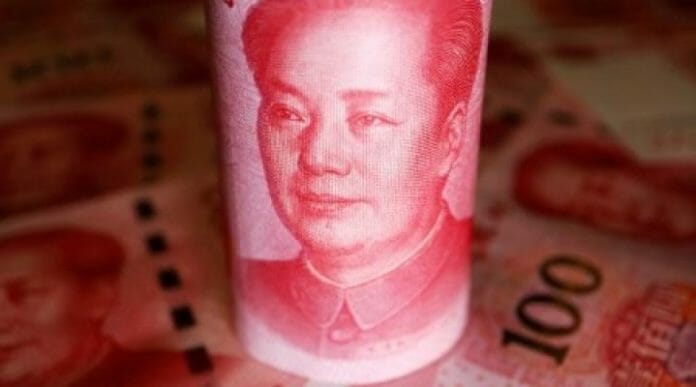China is rolling out a package of policies to invigorate its economy, including a long-awaited action plan to shore up the ailing private sector that underpins economic growth, jobs and technological innovation.
Beijing’s move on Wednesday came after the nation’s second-quarter gross domestic product (GDP) grew by just 0.8 per cent, compared with the first quarter. The outcome has fanned fears that the national economy has been losing steam, while making the market more anxious over policy solutions by top leadership, who will convene a quarterly economic analysis conference in late July.
The 31-point action plan is the most comprehensive one since President Xi Jinping started his third presidential term in March, as it touches on a raft of widely concerning issues such as market entry, fair competition, financing support, payment defaults, intellectual property rights and legal protection.
Despite Beijing’s determination to improve China’s business environment and to solve on-the-ground difficulties, investors and analysts want to see quick, effective and thorough action to prevent private confidence from faltering while bringing struggling businesses back from the brink of closure or bankruptcy.
According to the government document, dated July 14, SCMP cited that the private sector is regarded as an important force to promote modernisation and an important foundation for the country’s high-quality development.
The authorities reiterated vows to tear down market-entry barriers for private entrepreneurs and will conduct an assessment of market entries, while accepting complaints.
“We’ll release a negative list of market intervention behaviours regularly,” the document says. “Also, we’ll timely clean up and abolish policies that impede the unification of the market and fair competition, including local protection, market segmentation and designated transactions.”
The action plan also vowed to improve the current mechanism to prevent payment defaults, which are often a life-or-death matter for small businesses.
Meanwhile, it pledged to create a legal environment that provides equal treatment for private entrepreneurs and protects their legitimate interests and rights.
“There is no doubt that the central government and local leaders are now focusing on the economy,” said Wu Hai, founder of karaoke chain Mei KTV and a prominent voice pushing for an improved business environment. “It’s a good thing, but it will come down to implementation.”
Wu said local departments tend to welcome big companies but tend to ignore smaller players, while small businesses are generally more affected by random checks, fines and licensing issues on the ground.
“Those departments, without any responsibility for accomplishing economic goals, are the biggest shortcoming in the drive to improve the business environment,” he said.
China has more than 47 million registered private firms, a vast majority of which are small players, and more than 100 million self-employed businesses. They were hit hard by the pandemic, while some like platform companies, property developers and private tutors were also affected by Beijing’s regulatory campaigns.
But so far, their financial standing has not significantly improved this year. The profits of private-run industrial firms dropped by 21.8 per cent, year on year, in the first five months of 2023. And private investment from January-June fell by 0.2 per cent from a year earlier, compared with overall investment growth of 3.8 per cent, according to the National Bureau of Statistics.
The new action plan is part of Beijing’s broader efforts to stabilise the economy, as major ministries have been scrambling to release supportive measures to unleash consumption potential, relax property restrictions, and shore up investor confidence.
To promote fair competition, the document says Chinese authorities will take “forceful” measures to prevent the misuse of antitrust law enforcement – a matter that has haunted internet giants for the past several years.
Beijing also plans to raise the political status of private entrepreneurs, with the document encouraging them to join the country’s legislative or advisory bodies at different levels and to “play a bigger role” in international economic activities.
These fresh vows, after Premier Li Qiang’s symposium last week with major platform companies, further reflect the completion of a regulatory U-turn following Beijing’s two-and-a-half campaign that led to big fine tickets and massive business restructurings.
The private economy accounts for more than 60 per cent of the national GDP, more than 70 per cent of technological progress, and more than 80 per cent of the urban workforce. These figures have been frequently cited in government circulars to show how important the private economy is to China’s development.
The National Development and Reform Commission has also set up a regular communication channel with private firms, and three meetings were arranged with representatives of more than a dozen private firms in the past three weeks.
Moving forward, the action plan advocates for a public opinion environment that encourages private firms to innovate while being more accepting of their failures.
“We should be understanding, tolerant and help [rectify private firms’] operational mistakes and failures,” it said.
China’s state banks seen selling U.S. Dollars offshore to slow Yuan declines
On the sidelines of the plan, it has been reported that China’s major state-owned banks were seen selling U.S. Dollars to buy Yuan in the offshore spot market in early Asian trades on Thursday, two people with direct knowledge of the matter said.
Such state bank dollar selling was meant to slow the pace of yuan declines, Reuters quoted a source saying.
China’s central bank on Thursday also announced a relaxing of a cross-border financing rule, making it easier for domestic firms to raise funds from overseas markets and easing depreciation pressure on the yuan currency.
China’s offshore yuan strengthened more than 0.7% to a high of 7.1812 per dollar before last trading at 7.1890 as of 0249 GMT.
In the onshore market , the yuan followed a similar upward bounce, but it is still down about 4% against the dollar year-to-date, making it one of the worst performing Asian currencies for 2023.








